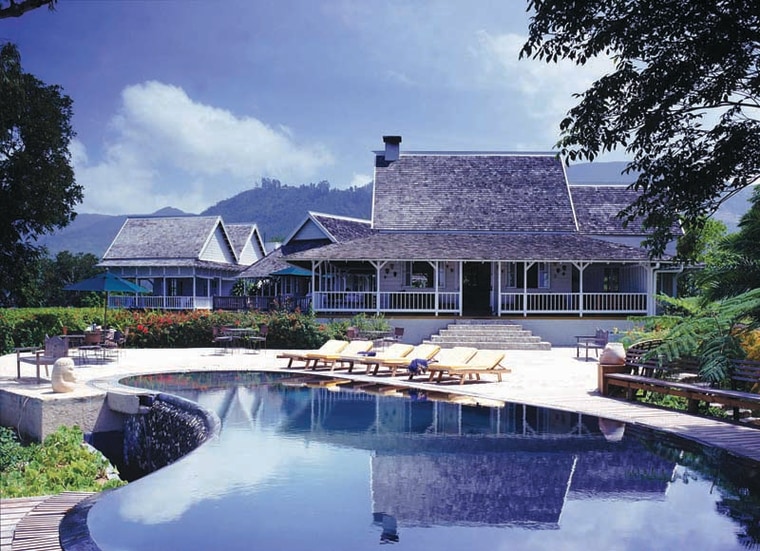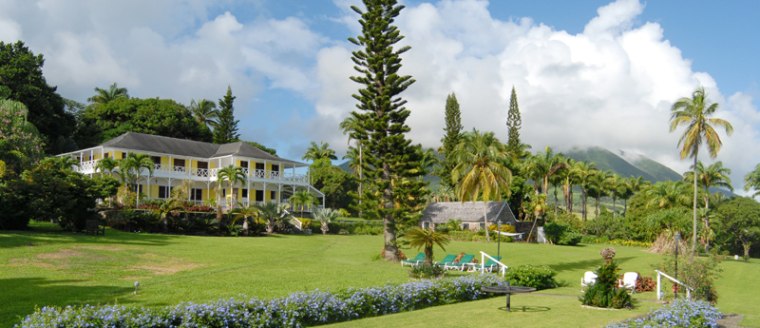As the Caribbean proliferates with modern hotels touting sleek designs and the latest high-tech gadgets, it’s easy to feel that you could be in a hotel in Miami or Los Angeles or even in New York and not on a tropical island. Yet there are still a handful of Caribbean’s properties that belong to a bygone era — plantation hotels.
Built on the remains of former plantations (mostly sugar plantations), they’re a big draw because of their sense of history, intimacy and distinctive architectural detailing, such as old stone windmills and ruins of thick volcanic stone walls.
“Staying in one of these inns is a unique experience,” says Timothy Hoffman, owner of Montpelier Plantation Inn, a luxury plantation hotel on the island of Nevis. “It’s not like staying in a cookie-cutter hotel because each one is individual and has its own history and romantic charm. When you stay in a plantation hotel, you are transported to another era,” says Hoffman.
The Caribbean’s colonial period was roughly from 1650-1850, and during this time England, France, Denmark and the Netherlands built sprawling plantations on islands such as Jamaica, Barbados and St. Kitts. They used slave labor to become the largest sugar-producing region in the world (coffee and fruits such as coconuts, pineapple and mango were also grown here but on a smaller scale). After slavery was abolished in the home countries in the mid-1800s, many of the plantations were destroyed or fell into disrepair. Eventually, conservationists realizing the historical significance their appeal as hotels stepped in to restore them.
“Culturally, it’s important that they are preserved,” says John Guilbert, executive director of the Nevis Historical and Conservation Society, established in 1980. “The Caribbean’s colonial past and legacy of slavery cannot be ignored... it is our history, and from a preservation standpoint it’s important to retain these historical structures for future generations. Our island depends on tourism and economically it works well for us to have some of these buildings operate as hotels.”
A former sugar plantation, the Montpelier dates back to 1740 (the Hoffman family bought it in 2002). The plantation is historically significant in various ways: It had one of the first wind-powered sugar mills on the island and served as the home of the first president of Nevis. In 1787, it was the site of the nuptials of British naval hero Horatio Nelson and Fanny Nisbet, daughter of a wealthy plantation owner. “The hotel’s original owner recreated the Great House in 1960 on the plantation’s original foundations with some of the original stonework,” says Hoffman. Guests today can dine in the massive stone mill, which has its original steps leading up to it as well as original walls and flooring.

There are several other plantation hotels on Nevis including the Nisbet Plantation, whose Great House, dating from 1778, served as the Nisbet family home, and Golden Rock Plantation Inn, which is currently being restored by American artist Brice Marden and a descendant of the original owner.
On St. Kitt’s, Nevis’s sister island, there are Rawlins Plantation Inn, whose sugar mill has been converted into a honeymoon destination, and Ottley’s Plantation Inn, whose swimming pool is built into the remains of the old boiling house.
“Of course, in the Caribbean there are pools everywhere,” says Ottley’s owner Karen Keusch. “But where else can you swim alongside 300-year-old walls? Nearby Brimstone Hill Fortress, which took 100 years to build starting in the 1690s, still stands.”
Each plantation had a Great House, the focal point of the plantation. The owner and his family lived there and would socialize with fellow planters and entertain guests from abroad.
“Architecturally speaking, Great Houses were impressive,” says Guilbert. “Typically, they were made of a strong teak-like wood with no nails, only wooden pegs, and were two or three stories high. The windows would have wooden louvered shutters to block out the sun but more importantly to protect against hurricanes. One of the oldest wooden structures in the entire Caribbean is the Great House of the Hermitage Hotel, which was originally thought to date from the 1700s but might actually be more like 1650.”
A Great House is still the hub of these inns, and it’s where guests will find the restaurant and bar and other public spaces.
“The communal aspect of a plantation hotel is another attribute,” says Hoffman. “In the morning and afternoon most people do their own thing, go the beach or take an island tour, but in the evening, it’s nice to meet up over a cocktail and rehash their day.”
